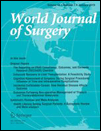Assessment of Avoidable Readmissions in a Visceral Surgery Department with an Algorithm: Methodology, Analysis and Measures for Improvement
Abstract
Background
Standardized quality indicators assessing avoidable readmission become increasingly important in health care. They can identify improvements area and contribute to enhance the care delivered. However, the way of using them in practice was rarely described.
Methods
Retrospective study uses prospective inpatients’ information. Thirty-day readmissions were deemed potentially avoidable or non-avoidable by a computerized algorithm, and annual rate was reported between 2010 and 2014. Observed rate was compared to expected rate, and medical record review of potentially avoidable readmissions was conducted on data between January and June 2014.
Results
During a period of ten semesters, 11,011 stays were screened by the algorithm and a potentially avoidable readmission rate (PAR) of 7% was measured. Despite stable expected rate of 5 ± 0.5%, an increase was noted concerning the observed rate since 2012, with a highest value of 9.4% during the first semester 2014. Medical chart review assessed the 109 patients screened positive for PAR during this period and measured a real rate of 7.8%. The delta was in part due to an underestimated case mix owing to sub-coded comorbidities and not to health care issue.
Conclusions
The present study suggests a methodology for practical use of data, allowing a validated quality of care indicator. The trend of the observed PAR rate showed a clear increase, while the expected PAR rate was stable. The analysis emphasized the importance of adequate “coding chain” when such an algorithm is applied. Moreover, additional medical chart review is needed when results deviate from the norm.




